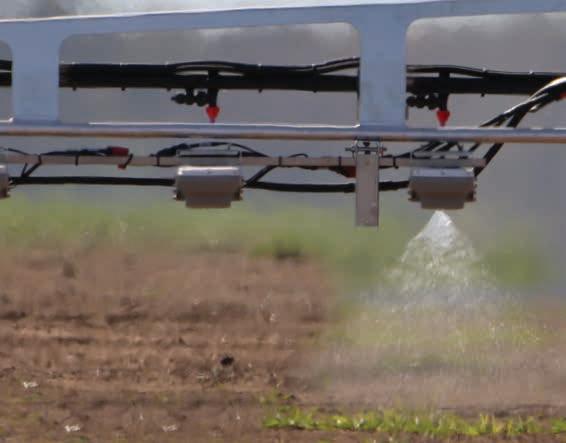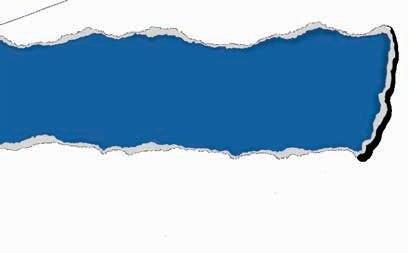


















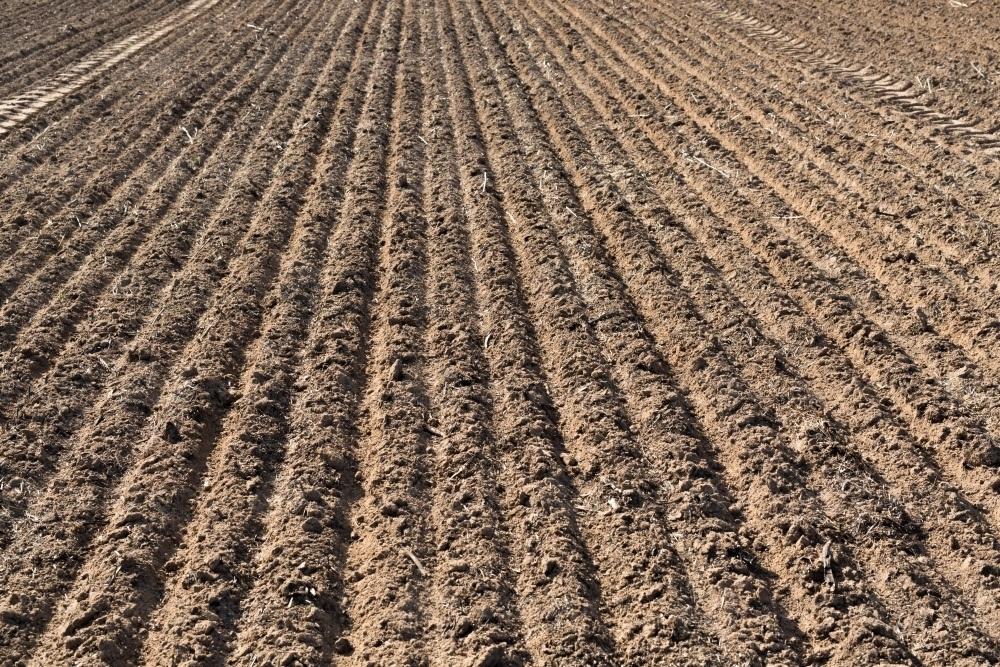





















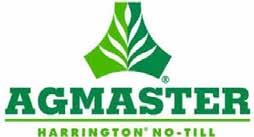

































































vineyard owners are impressed with this season’s yield and quality, despite a late harvest.
Norton Estate owners Chris and Sam Spence said this year’s harvest was later than it had ever been before.

“We had an incredibly wet winter and spring and it didn’t stop raining until mid-December, so we didn’t have the traditional Wimmera spring and summer which gets warm and dry – it took a long time for the fruit to ripen,” Mr Spence said.
“Normally we would be finished about Labour Day weekend in March, but this year we didn’t start our fruit pick until the weekend after that, which is some four to five weeks later than normal.”
Mrs Spence said there were some silver linings to the late season.
“We are one of the luckier ones. Other vineyards, the poor things, are still picking and still waiting for fruit to ripen,” she said.
“For a frustrating wait – it seems to take forever when you’re getting into April and still waiting for the grapes to ripen – it turned out pretty well for us. Plus, we have been able to start a new label, a rosé, which I have been wanting to do for a while.”
Mr Spence said he had never been ‘fully onboard’ with the idea of rosé, but the season had lent itself to trying it.
“We had a huge amount of shiraz hanging on the vines and I said to Sam, ‘you know that rosé you love to drink – this might be the right year to start this label’,” he said.
“It is made from the same grapes as our Rockface shiraz and the winemakers have said it’s some of the best rosé fruit they have seen in years, so at this stage, it’s pretty spectacular, but it’s not over until it’s in the bottle.”
Grampians Estate owner Tom Guthrie said he was very happy that his 15 pickers were taking off a reasonable crop this year, as the harvest season slowly neared its end.
“Around the region, the wet spring has meant some yields are down while others are doing okay,” he said.
“Harvest is extremely late and we’re running out of sun to fully ripen the grapes – it was a combination of a

New editions of Agriculture Victoria’s cereal and pulse disease guides are available to download as mobile-friendly e-books.
The 2023 Cereal Disease Guide and 2023 Pulse Disease Guide rank susceptibility of new and commonly grown grains and pulses such as wheat, barley, oats, lentils, faba bean and chickpea.
The guides have been produced with support from Grains Research and Development Corporation and provide updated disease ratings and advice on reducing disease risk this season.
Growers can consult the current disease guide for the latest ratings and definitions to plan disease management.
Agriculture Victoria cereal pathologist Hari Dadu said the release of the updated cereal disease guide complemented earlier advice this season from Agriculture Victoria.
“They contain the latest disease resistance ratings to assist growers with their crop disease management plans and help prevent grain yield loss,” he said.
“Within the guide, we advise on how to proactively manage crop disease risk, particularly stripe rust, which wreaked havoc in wheat crops last year.
cool summer and wet spring that has pushed it back.”
However, Mr Guthrie said late seasons typically created the best wines.
“All good years are late. The longer the grapes are on the vine the more flavour they have, provided they ripen,” he said.
“This year and the previous two are going to be top-quality years, which is always exciting because, at the end of the day, that means good, award-winning wines and good sales.”
Mr Guthrie said every season had different challenges, but he was delighted to be getting the crop off the vine.
“You never know what is coming next when you’re farming but the fruit looks pretty good,” he said.
“Everyone is optimistic as China looks to be opening to trade again soon, our cellar doors are open and best of all we have Grampians Grape Escape approaching, which is a chance to showcase wines and have a party.
“The Grampians area produces


some of the world’s best cool climate wines and we’re lucky to be growing grapes in this region.”
Mr Spence said the advantage of a long, slow ripening process was the development of flavour.
“During hot, dry summers you get sugar early and then flavour and everything comes in afterwards,” he said.
“This year we got the flavour early and had to wait for the sugar to come up after.
“Winemakers are pretty chuffed with this year’s samples – they said the sauvignon blanc that we picked off early is amazing.
“This year’s fruit pick was the biggest we have ever had, which shows our processes in the vineyard are getting better.
“We used to be a spur-pruned vineyard, which is quick, easy and gives good results.
“We decided, with the encouragement of a viticulturist, we might be better to convert to cane pruning, which gives exact bud numbers – you don’t get any phantom or water shoots and every bud gives
two bunches of fruit. It gives more vigorous growth and more quality bunches, so since we have started the laborious task of cane pruning, it has put about 30 percent productivity back into the vineyard with no more inputs, so it has been a bonus for us.”
Mr Spence said the vines ‘know’ when to remain active and when to be dormant, despite the late harvest.

“While the fruit is on the vines, they will stay pretty healthy, within a week of picking you can see them go ‘thank goodness that’s over’ and they relax and start to go yellow,” he said.
“We have a real bonus going into next year – the vineyard is quite wet, so those vines are going into dormancy for three months, or I call it going to bed, with plenty of moisture around the root zone.
“We have put out a post-harvest fertiliser for them to take that up so that will provide some nutrients for when they boost into budding in mid-September and the process starts again.
“If we get a reasonable, or even average, winter we’re in for another cracking year.”
“Choosing a variety that is less susceptible to disease using the ratings in our guide is a recommended step to keep disease at bay.”
For pulse growers, this year’s edition will be of particular interest as it includes new botrytis grey mould ratings for lentils.
Agriculture Victoria pulse pathologist Joshua Fanning said the varieties GIA Leader, PBA Hallmark XT and PBA Kelpie XT have been provisionally downgraded, meaning they would need to be monitored more closely this year.
“It’s essential for growers to use the latest edition of the disease guide to inform their crop disease management strategy as disease ratings are reviewed and revised annually,” he said.
“Last year’s wet conditions were highly conducive for pulse diseases across Victoria and have impacted the ratings of some varieties and some disease ratings have changed to reflect this.
“Due to the high risk posed by stubble borne diseases growers should not double crop paddocks.”
The 2023 Pulse and Cereal Disease guides are available on the Agriculture Victoria website at agriculture. vic.gov.au/biosecurity/plant-diseases/ grain-pulses-and-cereal-diseases


























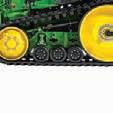


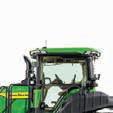



Goodyear’s Spiraflex Air Seeder hose is designed for use in Air Seeding applications where there is a requirement to view the product being conveyed.

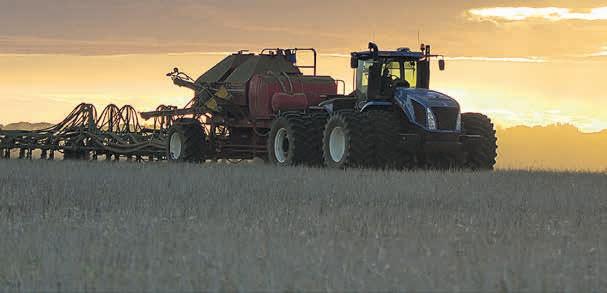
This hose is specially formulated with a Clear Thermosplastic Urethane Liner offering superior wear resistance in not only seeding applications, but many other dry bulk material delivery applications.





Wimmera farmers are confident heading into a new cropping season that a strong soil moisture profile will be a key ingredient for a good year.


Crop Opti Horsham agronomist Matt Beddison said some farmers had begun sowing crops for hay and sheep feed.

“Throughout this week, farmers will start sowing canola,” he said.
“Confidence is quite high. There is subsoil moisture and with 50 to 90 millimetres of rain during the past two weeks that moisture has probably joined up in the soil profile.”
Mr Beddison said the moisture was also good for the timing of killing weeds.
“Typically, when we get a break, we want to start sowing, but within 10 to 14 days all the weeds germinate and grow,” he said
“With the rain we had 10 days ago it’s been nearly perfect from a knockdown point of view to get in and kill the weeds.”
Bartlett Brothers Contract Harvesting’s Chris Bartlett, a Pimpinio farmer, said the season was off to a good start.

“Like most people, I am not complain-


Applications for the 2023 Upskill and Invest Young Farmers Scholarships are now open.
The scholarships provide an opportunity for young farmers across the state to gain new skills and invest in their future.
Agriculture Minister Gayle Tierney encouraged the next generation of farmers to apply and contribute to the future of Victoria’s vibrant agriculture sector.
“Victoria’s young farmers will be responsible for leading the agriculture sector into the future and that’s why it is vital we support their pursuit of a profitable, rewarding career,” she said.
“The Upskill and Invest Young Farmers Scholarship program provides the next generation of farmers with an opportunity to learn and invest in their career as part of the Victorian government’s commitment to the sustainability of the industry.”
The program offers scholarships of up to $10,000 with each recipient initially receiving up to $5000 to support their training and study, and up to $5000 to invest in putting their new skills into practice.
Successful applicants can receive training in areas such as business and risk management, genetics and pasture management, digital agriculture or adapting to climate change.
When they complete their studies, they can invest in professional development and business planning, on-farm practices or equipment and technology.
Applications are open to farmers aged 35 and younger who have been working in farm businesses for at least three days a week for the past three months, with at least two years total experience on-farm. Applications will close on May 8.
People wanting to learn more about the program and to apply can visit the Agriculture Victoria via agriculture.vic.gov.au
ing, with good moisture underneath and the break two weeks ago,” he said.
“It’s been a good opportunity for our double knock weed program and ryegrass control.
“We hope our good start continues into the season because often when we start well it cuts off early.”
Mr Bartlett said he was not concerned by a below-average rain forecast.
“The crops will be able to grow down and it won’t be hard to tap into the soil moisture,” he said.
“We’re starting canola and vetch – while the soil is still warm, we want to get canola in the ground.
“We will then follow on with wheat, barley and lentils.
“At the moment supply is still behind for machinery parts, which is concerning, but chemical supply has been good.”
Mr Beddison said the forecast for a possible El Niño weather pattern later in the year was something to keep an eye on.
“It’s not as if we don’t need the rain, but it won’t be as significant a problem if we have below-average rain and didn’t have the soil moisture we do,” he said.
“We’re seeing good levels up to one metre down and more due to the rain at
the end of spring that soaked in and our soil held it.
“We have water in the bank and as long as the plants access it, that will be a good start.
“Farming does always feel like getting one step closer all the time to something going wrong, but there’s confidence in the crops this season.
“Hopefully the dry forecast doesn’t come true and we string together another good year.”
Victorian Farmers Federation grains council president Craig Henderson said the industry was ‘reasonably’ positive heading into the season.
“The soil profile has moisture and the rain has got weeds going so we can kill them in good time,” he said.
“People are starting to get canola, vetch and oats in and closer to the end of the month cereals will start to go in.”
Mr Henderson said there were some concerns about El Niño towards the end of the year.
“It will all depend on any heatwaves or late frosts, but if we have below-average rain there is still the chance of average yields because of the soil moisture,” he said.







Therehas been plenty of attention recently on the likely lifting of the tariffs imposed by the Chinese Communist Party on imports of Australian barley into China.
The tariffs were introduced because, apparently, we were dumping our barley into that market at prices lower than the prevailing Australian price.
It had nothing to do with global politics and definitely not designed to bring us to heel. Same with the bans on coal, wine and lobster.
Since the imposition of the barley tariffs in 2020, we have been able to find other willing buyers for our barley.
Moving successive large crops has been logistically challenging, but the buyers were there.

It is generally accepted though, the loss of the Chinese market has reduced the price received by our growers in the order of $30 to $50 a tonne.
The dilemma now for the Aussie barley industry is what to do if China removes all tariffs.
Do we revert to old habits and ship as much as we can to China? Or do we continue to develop new markets to ensure
we are not too dependent on one customer?
This is not a pitch for a return to the days of statutory marketing, but under that system, when all exports were managed by the Australian Barley Board, the industry could make decisions based on long-term objectives.

Market development was seen as a smart investment.

While we have been in China’s sin bin, groups such as the Australian Grains Export Innovation Centre have done a great job of promoting our barley into other markets. But in this deregulated environment, who will trade into those markets if the price is $30 a tonne lower than China? Are traders, and growers, going to prioritise market development over today’s best bid? Probably not.
So what have we learned from this?
Hopefully, we have all learned freedom to trade is in everyone’s interests.
Yes, governments will at times intervene to satisfy domestic political agendas, but in the main, let the business to business activity continue away from the glare of political posturing.
We have learned high dependency on one market is a risky strategy. But in a world where our organisational structures encourage short term thinking, how do we manage this risk?
Governments think only in election cycles and the next poll.
ASX-listed companies focus on the next six-month reporting period and the analyst updates.
And trading companies look to the next profit and loss statement and corresponding impact on the bonus pool.
It seems inevitable then, with barley, it will be all eyes to China again.
As farmers, we do think long term with key issues such as soil health, weed management and pest management.
But when it comes to marketing our barley I suspect we will be like everyone else – we will chase the cash. And if we do that with eyes wide open, that’s okay.
Just remember we should not complain next time we are on someone’s blacklist.

Prices on Australian exports continue to drop compared with the same time last year, for grain and livestock.
Lamb numbers at Horsham Regional Livestock Exchange last week reached 6000 with 3200 sheep. April 12 saw 10,600 lambs and 2300 sheep yarded.
Graham Pymer’s market report showed quality was mixed on Wednesday last week, with lead pens showing good finish and weight.
Light-weight lambs sold from $86 to $127 a head and light-trade lambs sold from $126 to $155 a head.

Medium-weight lambs sold from $150 to $175 a head, heavy-trade-weight lambs sold from $168 to $186 a head and extra-heavy lambs sold from $222 to $252 a head.
Merino lambs sold mostly from $140 to
$171 a head, while merino ewes sold for up to $158, crossbred ewes sold for up to $158 and heavy merino wethers sold for up to $175 a head.
The Department of Agriculture, Fisheries and Forestry reported Australian export prices, as of Thursday, for mutton, lamb and live sheep, were between 18 and 27 percent lower than in April last year.
Mutton was exporting at 420 cents a kilogram, lamb was exporting at 676 cents a kilogram and live sheep were exporting at $93 a head.
Grain prices were between 15 and 30 percent lower than in April last year.

Milling wheat exported at $469 a tonne, feed wheat sold for $443 a tonne and feed barley exported at $416 a tonne. Canola was exported at $895 a tonne.

What’s accuracy without width? This is where our Bredal XE range comes in, the spinners are positioned 6 metres apart giving the material a head start to successfully reach 48 metres in urea.



If accuracy is important to you then it just has to be Bredal! Speak to your local Emmetts dealership today.








Alucrative export market
could re-open for Wimmera growers, as China resumes talks with Australia to remove tariffs on barley.
China imposed 80 percent tariffs on Australian barley for five years, in May 2020.
China will conduct an expedited review of the tariffs during the next three months. In return, the Australian Government will suspend its World Trade Organisation appeal.
There is the option of a fourth month for review if necessary.
National Farmers Federation vice-president David Jochinke said World Trade Organisation appeal proceedings between China and Australia had paused.
“China has reinstated talks with Australia to remove tariffs on barley and other goods,” he said.
“Initially, China claimed Australia was subsidising costs of barley, which was disadvantaging other markets.
“Australia has evidence that we weren’t dumping barley on the market and was going to defend that.
“If China doesn’t start taking our goods, we can reinstate proceedings.”
Mr Jochinke said if tariffs were removed there would be more op-
portunity and a strong base for Wimmera farmers growing barley.

“China was a strong market, buying just shy of 60 percent of our barley, so it was very lucrative,” he said.
“The tariffs made barley unattractive for the market to purchase.
“We were very reliant on that market and it hurt Australian farmers when they stopped taking our product.”
Member for Mallee Anne Webster said she was cautiously optimistic for Australian barley growers following the announcement.
“China is an incredibly important trading partner for us and the removal of these tariffs would be a positive step for our growers,” she said.
“These sanctions were not justified in the first place and I know many farmers across the Mallee will be waiting to hear the outcome on this.”
Australian barley exports to China peaked at 6.3-million tonnes in 2016-17.
National farmer collective, GrainGrowers, chair Rhys Turton said China had been a key market for Australian grain and a resolution was in the best interests of both countries.

“This is a step in the right direction for trade between our two countries and highlights the value of the WTO process to encourage mechanisms
IN DISCUSSION: National Farmers Federation vice-president David Jochinke is hopeful of a positive outcome with China after reinstating talks to remove tariffs on barley and other goods.
for bilateral dispute resolution,” he said.
“It is heartening to see a resolution of constructive dialogue between the two governments, and we are hopeful that this process will result in a positive outcome for Australian growers.”
Mr Jochinke said the tariffs had made Australia sharper when it came to trade and taking all of its ‘eggs out of one basket’.
“From this experience, we know we need to be the preferred supplier for as many countries as possible and we have stepped up in that area,” he said.
“When one country does not want to, or cannot offer the premiums we
Rain across the Wimmera is tracking below average for the year-to-date, with a drier than normal start to autumn forecast to continue.
Horsham’s rain total year-to-date is 42 millimetres, compared with an average of about 90mm at the same time of year.
Stawell rain totals are tracking about 50mm below average for the same time of year, with 50.8mm recorded in 2023 so far.
Ararat has recorded 58.6mm to date, compared with an average of 143.8mm for the same time of year, while Nhill has recorded 27.4mm compared with an average 78.9mm.
need, we still have markets to sell to. We have developed a trade agreement with the United Kingdom from this, are in final negations with the European Union on an agreement and formed the India Economic Strategy.”

Mr Jochinke said the industry was now waiting to see action behind the words and was cautiously optimistic for a positive outcome.
“When China starts booking trades again that’s when we know the worst is probably behind us,” he said.
“The industry welcomes moves made by Foreign Affairs Minister Penny Wong and Trade Minister Don Farrell to rebuild a relationship that was in tatters.”
In Warracknabeal, 32.6mm of rain has been tallied compared with an average of 88.1mm and in Edenhope, 59.2mm of rain has been recorded compared with an average of 115.3mm.
The Bureau of Meteorology predicts below median rain is likely to continue from May to July for most of Australia. May to July maximum temperatures are likely to be warmer than the median for almost all of Australia.
The bureau stated the forecast was influenced by an El Niño-Southern Oscillation-neutral pattern, ENSO, that is tending towards El Niño in the latter part of the forecast period.
An ENSO-neutral pattern means the weather pattern is not El Niño or La Niña. It is also influenced by the chance that a positive Indian Ocean Dipole, IOD, event might develop in the coming months. An El Niño watch is current.
















Zero... a bad idea
Professor Howden is director of the Institute for Climate, Energy and Disaster Solutions at The Australian National University.
Most importantly, he is also a vice chair of the Intergovernmental Panel on Climate Change, IPCC, and he was on the US Federal Advisory Committee for the 3rd National Climate Assessment, was a member of the Australian National Climate Science Advisory Committee and contributes to several major national and international science and policy advisory bodies.
He’s been a climate scientist for more than 30 years and has a Nobel Peace Prize along with Al Gore for his work with the IPCC.
So how could this be? Not supporting zero carbon emissions.
Professor Howden has featured on Country Today several times to explain the COP United Nations climate change conferences and has talked about the con-

could have knocked me over with a feather when I heard internationally recognised Australian climate scientist Professor Mark Howden had said the numerous agriculture sectors net zero carbon emission targets by 2030 was a bad idea.Country Today

tinuing trend to drier conditions and drought, and other natural disasters such as flood and fires.
His argument is that many farmers will find the prospect of net zero emissions too hard to contemplate.
“For starters we don’t actually need to go to net zero for agriculture to be consistent with the Paris agreement – the international agreement on climate change first adopted in 2015, with signatories agreeing to fiveyear cycles of increasingly ambitious climate action,” Professor Howden explained on Country Today
“What we have signed up to as a nation is to reduce our emissions so temperatures stay below two degrees and as close to 1.5 degrees as we can.
“To go to 1.5 we do need to go to net zero for carbon dioxide, but we don’t have to go to net zero for methane and nitrous oxide and they are the two big gases produced by agriculture.
“So for methane that’s about a
60 percent reduction, for nitrous oxide about a 30 percent reduction.”
So why are the likes of Meat and Livestock Australia, the National Farmers Federation and others committing agriculture to the net zero by 2030 target?
“I couldn’t answer that one but it’s not a target that is actually required to essentially do the fair share of agriculture under the Paris agreement,” Professor Howden said.
“So we need to move away from a sort of knee-jerk reaction to a net zero number to something that is a bit more nuanced that reflects the gases that come from different industries.
“If you have a target which you simply don’t have a way of getting there, essentially, it’s very stressful if you’re being told to do something that isn’t possible.
“So we need to make these things feasible, and not just feasible but economically feasible, and at the same time improve other aspects of farming and rural life.”
So, having gone through the fine print, we need a rethink and realistic, achievable targets, not just making promises that cannot be kept.
KNOWLEDGE: Dr James Hunt presents his findings on nitrogen management, N banking, at BCG’s annual trials review day.
Trials day looks to the future
More than 170 BCG members attended the event last month online and in person to be involved in discussions about farming now and into the future.
Farmers discussed nitrogen management strategies for 2023 and how the longterm ‘N banking’ strategy of 125kg of nitrogen a hectare a year had stacked up in a
season such as 2022, with high rainfall and urea prices.
Presenting the research, Dr James Hunt said during five years of the experiment N decisions based on 50 percent yield prophet or 125kg a hectare N bank strategy apply more N, 63kg to 74kg a hectare, and were $128 to $179 a hectare a year more profitable than the district average N rate of 21kg to 30kg a hectare.

“High urea prices in 2022 were offset by higher grain prices, and the most profitable treatments and N application rates remain the same over the
past five years,” he said.
Traynors Lagoon farmer
Andrew Jesse said the trials review day was an event he marked in his calendar each year.
“It reinforces those things that sometimes you can get complacent about, nutrient depletion from previous year’s crops, fungicide pressure, the carry-over from last year,” he said.
“In previous years we have not been regimented in our fungicide strategy.
“This year we plan to be proactive and have a strategy in place early.”
JD946/956 MOCO, Wrecking for parts, good tri lobe roller etc.
Krone 320 Disc Mower, Wrecking for parts.
MF9152 Sickle MOCO, Wrecking for parts, good herringbone rollers, suit MF1375.
Macdon D60, Various parts.
Call
Grain Carts Australia 25-40t chaser bin available to order for upcoming harvest
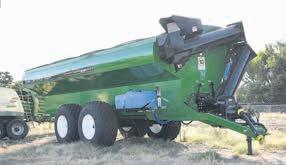

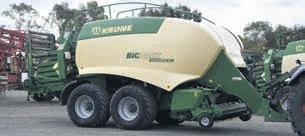

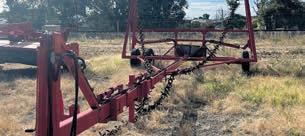
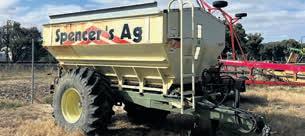
• Bin walls and floor from 8mm sheet.
• 20inch discharge auger made from 6mm line pipe.
• Auger flight 6mm thick.
• Rear steer on bogie axle bins.
• Load cells, turf tyres, fire fighting units optional.
Prices inc. GST
Wrecking Parts
Manitou MLT735, Manitou MLT telehandler, varieous parts, boom transmission final drives
Gleaner N6, all parts new overhauled Alison engine, front.
Case 1640 Header, all parts including front.
AGCO 9250, flex front, most parts.
Manitou MLT745, 2015 model, booms, transmission, drives, various parts.

MF2190, Baler parts, complete pick up (suit 2170), various parts.

JD7810 Tractor, various parts.
JD7930 Tractor, various parts.
MF7475, DynaVT Vario transmission, most parts.
JD 8960 4WD.
Rogator 1286C self-propelled boom spray.
Agriculture advocacy bodies are calling for regional road funding ahead of the Federal Budget, due to be released next month.

The Rural Road Alliance, recently formed by GrainGrowers, the National Farmers Federation, Australian Local Government Association and Australian Livestock and Rural Transporters Association, is calling for an emergency funding package totalling nearly $5.5 billion in the upcoming budget.
The alliance is asking for a one-off injection of $1 billion over four years directed at regional road and infrastructure reconstruction for councils impacted by flooding and other natural disasters to ensure a rebuild is to a standard more resilient to future disaster events.
The $5.5 billion would include $800 million a year across four years for the Roads to Recovery Program; $300 million a year across four years to address first and last mile freight productivity; and targeted funding through the Roads of Strategic Importance, ROSI, program to improve the long-term climate resilience of freight networks.
GrainGrowers general manager of policy and advocacy Zachary Whale said persistent and unprecedented rain had deteriorated critical road infrastructure across Australia’s grain-growing regions and exacerbated systemic long-term underfunding of the regional road network.
“This situation left many farmers






struggling to transport grain to market and poses a significant safety risk for rural communities who rely on these roads to access vital services,” he said. Mr Whale said sufficient maintenance was critical to ensure roads were resilient during natural disasters and to reduce reconstruction costs after climatic events.
A GrainGrowers submission to the Federal Government also called for a strategic and long-term view of road infrastructure investment.
Mr Whale said the increasing occurrence of climatic events such as floods and bushfires placed additional pressure on road design.
“Rather than just patching potholes, we need current investments to build resilience to emerging issues associat-
ed with natural disasters and climate risk,” he said.

The submission highlights the ROSI program as a critical tool in building resilience, with GrainGrowers calling for an additional $900 million in annual funding to be directed to freight networks.


“When addressing capacity, ROSI is critical as it focuses on elements such as road sealing, flood immunity, strengthening and widening, pavement rehabilitation, bridge and culvert upgrades and road realignments,” Mr Whale said.
“Additional funding through this program is needed to improve the longterm resilience of our vital freight networks.”
Victorian Farmers Federation, VFF, is also supporting the call for an emergency funding package.
VFF president Emma Germano said farmers were frustrated that governments continued to ‘neglect’ road maintenance.
“Enhancing the resilience of the road network to deal with extreme weather events is important, but it can only be

achieved by ensuring there is regular maintenance to keep them at an acceptable standard,” she said.







“Maintenance funding keeps going backwards and worryingly, Victorians keep risking their lives on dodgy and dangerous roads.”
VFF transport and infrastructure committee chair Ryan Milgate said that in planning for resilience, the government needed to take into account changes in network usage and increasing demands placed on roads by high-productivity freight vehicles.



“Resilience is not only about the gravel and bitumen, but the planning processes around it too,” he said.

“The standard and condition of roads must be up to the task of carrying the freight vehicles we use to get food and fibre to market.


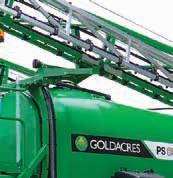

“That’s why the VFF is advocating for the Victorian government to undertake a state-wide agricultural freight strategy, to better understand where investments need to be targeted.”
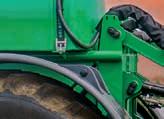
Mr Milgate said local government must be better resourced to get on with the job of fixing their road networks.
“We are seeing shires in the north of the state facing repair bills of more than $50 million in the aftermath of the floods,” he said.
“We’ll continue calling on the Victorian and Commonwealth governments to increase the funding available to regional roads asset maintenance.”
Applications for Greening Australia’s landholder grants to positively impact land conservation, soil improvement and land productivity close on Sunday.
The grants, of up to $30,000, are available through the legacy of western Victorian farmers John and Bette Mann and honour their passion for incorporating environmental restoration and conservation into farming practices.
The first round of applications will be awarded by June for projects able to be completed by October 2024. The grants are open to all landholders in Victoria with property used for farming or agriculture.
The landholders must share the principles of Greening Australia’s land and productivity objectives, which are activities that positively impact land conservation, soil improvement or land productivity.

They must also have a whole-of-property plan in place or are willing to implement one and no less than 15 percent of the total property set aside for the aforementioned objectives.

Application forms can be requested online at greening australia.org.au/mann-land holder-grant

“The standard and condition of roads must be up to the task of carrying the freight vehicles we use to get food and fibre to market”
– Ryan Milgate, left
Anew report commissioned by Australian dairy co-operative Norco and National Farmers Federation has found farmers’ mental health is declining across the country.
The National Farmer Wellbeing Report found 30 percent of farmers reported a decline in their mental health during the past few years.
It showed 45 percent of Australian farmers had felt depressed and 64 percent experienced anxiety.
Additionally, 45 percent of Australian farmers reported having thoughts of self-harm or suicide, while 30 percent reported having attempted selfharm or suicide.
The report was based on surveys of more than 1300 Australian farmers, conducted in February.
National Rural Health Alliance studies show the average suicide rate among Australian farmers is about 59 percent higher than the general population. This is equivalent to one farmer taking their own life every 10 days.
National Farmers Federation vice-president David Jochinke of Murra Warra said the data highlighted a sense of shame and stigma felt by many farmers when it came to discussing mental health.
“Farmers are built tough and can certainly endure a lot, but it’s in-

credibly important that we work to normalise mental health and give our farmers both permission and a safe space to talk,” he said.
“But to do this effectively, we need to have the right resources and support mechanisms in place to adequately address their needs.
“This is a complex issue that requires a robust and whole of industry approach, and we applaud Norco’s commitment to creating mental health advocates in farming communities, and we support their calls for greater industry participation on this front.”

Mr Jochinke said NFF was calling on all levels of government to urgently assess the resourcing provided to farming communities as their needs were not being met by existing services.
“We need dedicated resourcing to tackle farmers’ mental health support, and that needs to come from each level of government with leadership from the Commonwealth,” he said.
The report showed the top-three factors impacting farmers’ mental health were weather or natural disasters, financial stress and inflation, and cost pressures.
Natural disasters impacted 88 percent of Australian farming operations significantly during the past five years, with an average cost of $1.4 million a farm.
Lifeline on 13 11 14
Kids Helpline on 1800 551 800
Beyond Blue on 1300 224 636
Suicide Call Back Service on 1300 659 467 headspace on 1800 650 890 MensLine Australia on 1300 789 978 In an emergency phone 000.

When asked what was most emotionally taxing about the experience, more than half cited the financial burden, followed by the impact on animals and loss of stock and the physical rebuild and recovery process.
Norco chief executive Michael Hampson said while the research findings were saddening, it was important to be able to understand how pronounced the issue of mental health had become – especially in light of recent natural disasters.

“We saw first-hand the devastating impacts the unprecedented flooding event 12 months ago combined with the ongoing wet weather has on our farmers, many of whom are still rebuilding physically, financially and emotionally,” he said.
“Overlay this with years of heavy drought, bushfires and now rising input costs across all farming sectors and it’s unfortunately the reality that
many farmers are doing it tough. The research has solidified an issue that we were concerned existed, however, the breadth and depth of this issue is really quite profound.
Mr Hampson said it was ‘devastating’ that a high proportion of farmers do not feel that what they do is valued.
“To help ensure our farmers feel valued, there’s really no better place to start than by making sure that we, as Australians, choose Aussie farmer products over foreign companies and imported products,” he said.
“But beyond this, we also need to consider ways in which we can actively help address the issue of declining mental health within our farming communities.”
Mr Hampson said when it came to mental health, farmer-to-farmer support was key.
“Farmers in need are most likely to open up to a fellow farmer, or some-




one who understands firsthand what they’re experiencing,” he said. Report findings indicated many farmers did not want to ‘burden’ family or friends with their problems or were simply not comfortable discussing them.
For those who experienced mental health challenges, about one in five did not want to seek or receive help, while one in 10 felt too embarrassed to do so.
One in seven farmers also reported difficulty accessing suitable services in their community.
Mr Hampson said the issue was far bigger than farming communities alone.
“It really requires an industry-wide approach to ensure that farmers across the country have access to the support and services they require – because the future of our industry really does rely on it,” he said.
“Farmers are built tough and can certainly endure a lot, but it’s incredibly important that we work to normalise mental health and give our farmers both permission and a safe space to talk”
– David Jochinke
If you, or someone you know, needs help, phone:


